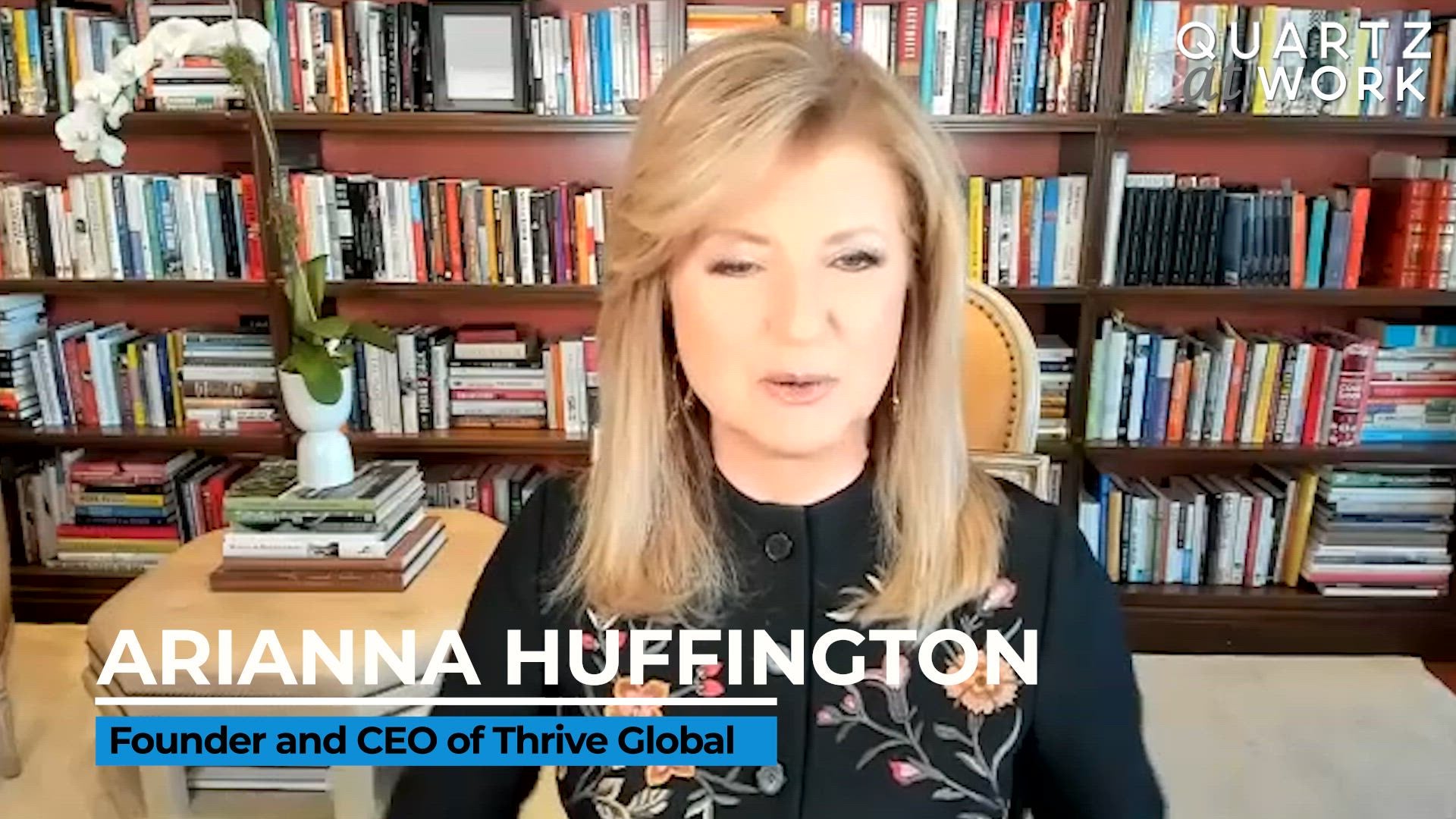Is your oysgezoomt causing stress?
Arianna Huffington on combating stress in a new world for workers

“I’m not stressed,” I insisted to my doctor, even as my bloodwork results suggested otherwise. “Your cortisol level, the stress hormone your body produces, is through the roof, and something needs to change,” my doctor replied sternly. Despite swearing I was solid, not stressed, I was clearly in denial. It’s a familiar scene for many of us, and one that’s become all too common in today’s fast-paced world. But Arianna Huffington, the founder and CEO of Thrive Global, the behavior-based tech platform bent on beating burnout, has a different approach—one that could revolutionize the way we think about work and productivity.

Huffington’s journey to this realization wasn’t an easy one. In 2007, she collapsed from sleep deprivation, crushing her cheekbone in the process. “If you would have asked me that morning, Arianna, how are you?, I would have said fine,” she recalled. “Because we all learn how we can keep running on empty—even how to be productive when running on empty, in a transactional way. When we begin to be much more aware of our state of being, everything changes.”
That awareness led Huffington to develop Thrive Global’s “resets”—60-second digital microbreaks designed to help us reset and recharge. In a recent episode of Quartz’s videocast, Reworking Work, Huffington explained the importance of these breaks, whether we’re suffering from sleep deprivation or from oysgezoomt, the newly-minted Yiddish word meaning “fatigued or bored by Zoom.” The good news is that although virtual fatigue is real, it can be addressed by taking breaks—even short resets.
Combatting meeting fatigue with microbreaks
Virtual fatigue sets in after just 30 minutes of meeting time, according to one study from Microsoft. In a surprise to few, back-to-back virtual meetings dull our focus. And transitions between virtual meetings can cause significant stress when we don’t get a break.
But taking breaks between meetings stops cumulative stress from building up, resetting the brain, boosting positive connections, and allowing our brains a chance to reset. After just two hours of back-to-back meetings, there was a consistent increase in beta waves, which are connected to stress. But when a short break was incorporated, the beta waves calmed down. Even when the participants had to attend four more virtual meetings, the beta waves stayed low, drawing out the benefits of the break.
Neuroscience shows that we can course-correct from stress in just 60 to 90 seconds, so our break time doesn’t need to be long. “That’s the time it takes to move us from the sympathetic to the parasympathetic nervous system and reduce the cortisol stress hormone,” said Huffington. “As a result, we don’t end the day marinated in stress, which is when people will binge-eat or drink, or have trouble sleeping.”
Microbreaks aren’t new, either. The industrial and manufacturing sectors have long practiced “safety moments,” short breaks taken throughout the day, focused on a topic connected to safety or well-being. “Oceaneering International has a safety moment of the month,” said Huffington. “The Occupational Safety and Health Administration, which oversees workplace safety, even opens many of its meetings with a safety moment.”
How to build resets into your workflow
With so many benefits, it’s important to establish a routine of resets. Building on what research has learned, Thrive brought the science of microbreaks into its app’s digital resets—one-minute long personalized videos. This science-based, multimedia tool counters cumulative stress by providing an opportunity to engage, focus, and be more productive. Workers can create their own personalized 60-second reset by selecting images, quotes, and sounds that bring you calm and joy.
“Since resets are personal, we develop deeper connections with each other,” says Huffington. “We learn a bit about each other’s families and inspirations, and see who chooses calm classical music and who chooses their favorite rock song.” One of Huffington’s favorite resets includes pictures of her family and nature, set to Taylor Swift’s You Need to Calm Down.
To ensure the company uses its own product, or as Huffington puts it, “drinks their own champagne,” Thrive has incorporated creating these digital resets into their onboarding process. They also start team meetings by sharing one person’s reset, giving the whole team a chance to get grounded together.
The key for resets, digital or not, is to embed them into your workflow. Whether it’s integrated into the start of team meetings or when a call center agent hangs up after a long call, employees feel the difference. “We meet you where you are, as we know so much about your day. We’ll feed you these resets when you need them the most,” said Huffington.
Results from an early Thrive pilot of digital resets with a Fortune 10 retailer showed an increase in customer satisfaction and improved well-being. “One of the things I love the most is that they feel like they matter more to their employer,” said Huffington. “That’s a very important moment right now in business culture where we have to bring more redemption, more forgiveness, and more grace into our interactions.”